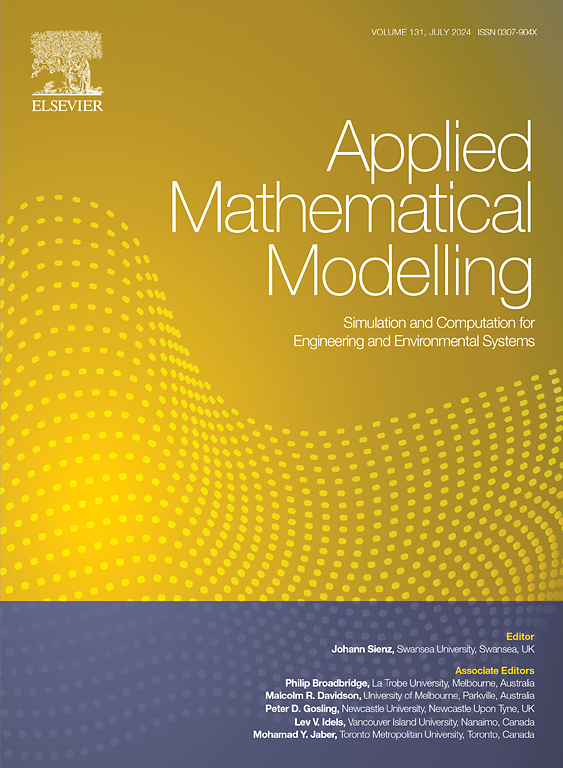Distributed large-scale joint non-uniform UAV formation path planning based on global optimal guidance
IF 4.4
2区 工程技术
Q1 ENGINEERING, MULTIDISCIPLINARY
引用次数: 0
Abstract
In the military field, the utilization of unmanned aerial vehicle (UAV) formations to carry out saturation attacks on enemy forces is the development trend of future war. Traditional path planning algorithms have the disadvantages of poor real-time performance, poor flexibility, poor scalability, and weak anti-jamming ability, which make these algorithms difficult to apply in the control of large-scale joint non-uniform military UAV formations. This paper proposes a path-planning method for large-scale, low-cost military UAVs, it addresses three key aspects: system design, path-planning algorithms, and UAV safety guarantee. In system design, we implement a distributed formation control system. In this setup, individual agents can perform flight tasks independently using autonomous algorithms without needing to communicate with a central control center. In path planning algorithms, we quantify the four interactions of UAVs and combine them with the linear separation force strategy to construct a set of behavior-based formation coordination control methods through a reasonable interaction combination method. By adding guided paths, based on the integration of behavior-based formation coordination control methods, this paper retains the advantages of global path planning algorithms, such as high success rate, and local path planning algorithms, such as real-time performance. By designing a distributed formation control system with strong robustness and incorporating an escape mechanism, the system benefits from both passive and active fault-tolerant control strategies. This significantly enhances the overall stability of the system. Ablation experiments demonstrate that the components of the formation control system proposed in this paper are reasonable. Simulation experiments indicate that the distributed large-scale joint non-uniform UAV formation real-time path planning method is secure, stable, adaptable to various planning environments, and exhibits a fast convergence speed for the formation. Additionally, it is scalable, flexible, and suitable for application in large-scale clusters, among other benefits.
基于全局最优制导的分布式大规模联合非均匀无人机编队路径规划
在军事领域,利用无人机编队对敌军进行饱和攻击是未来战争的发展趋势。传统的路径规划算法实时性差、灵活性差、可扩展性差、抗干扰能力弱等缺点,使得这些算法难以应用于大规模联合非均匀军用无人机编队的控制。提出了一种大型低成本军用无人机的路径规划方法,从系统设计、路径规划算法和无人机安全保障三个方面进行了研究。在系统设计中,我们实现了一个分布式的编队控制系统。在这种设置中,各个代理可以使用自主算法独立执行飞行任务,而无需与中央控制中心通信。在路径规划算法中,我们量化了无人机的四种相互作用,并将其与线性分离力策略相结合,通过合理的相互作用组合方法构建了一套基于行为的编队协调控制方法。通过增加引导路径,在融合基于行为的编队协调控制方法的基础上,保留了全局路径规划算法的高成功率和局部路径规划算法的实时性等优点。通过设计一个具有强鲁棒性的分布式地层控制系统,并结合逃逸机制,系统可以从被动和主动容错控制策略中获益。这大大提高了系统的整体稳定性。烧蚀实验表明,本文提出的编队控制系统各组成部分是合理的。仿真实验表明,分布式大尺度联合非均匀无人机编队实时路径规划方法安全稳定,适应各种规划环境,对编队收敛速度快。此外,它具有可伸缩性、灵活性和适合大规模集群中的应用程序等优点。
本文章由计算机程序翻译,如有差异,请以英文原文为准。
求助全文
约1分钟内获得全文
求助全文
来源期刊

Applied Mathematical Modelling
数学-工程:综合
CiteScore
9.80
自引率
8.00%
发文量
508
审稿时长
43 days
期刊介绍:
Applied Mathematical Modelling focuses on research related to the mathematical modelling of engineering and environmental processes, manufacturing, and industrial systems. A significant emerging area of research activity involves multiphysics processes, and contributions in this area are particularly encouraged.
This influential publication covers a wide spectrum of subjects including heat transfer, fluid mechanics, CFD, and transport phenomena; solid mechanics and mechanics of metals; electromagnets and MHD; reliability modelling and system optimization; finite volume, finite element, and boundary element procedures; modelling of inventory, industrial, manufacturing and logistics systems for viable decision making; civil engineering systems and structures; mineral and energy resources; relevant software engineering issues associated with CAD and CAE; and materials and metallurgical engineering.
Applied Mathematical Modelling is primarily interested in papers developing increased insights into real-world problems through novel mathematical modelling, novel applications or a combination of these. Papers employing existing numerical techniques must demonstrate sufficient novelty in the solution of practical problems. Papers on fuzzy logic in decision-making or purely financial mathematics are normally not considered. Research on fractional differential equations, bifurcation, and numerical methods needs to include practical examples. Population dynamics must solve realistic scenarios. Papers in the area of logistics and business modelling should demonstrate meaningful managerial insight. Submissions with no real-world application will not be considered.
 求助内容:
求助内容: 应助结果提醒方式:
应助结果提醒方式:


